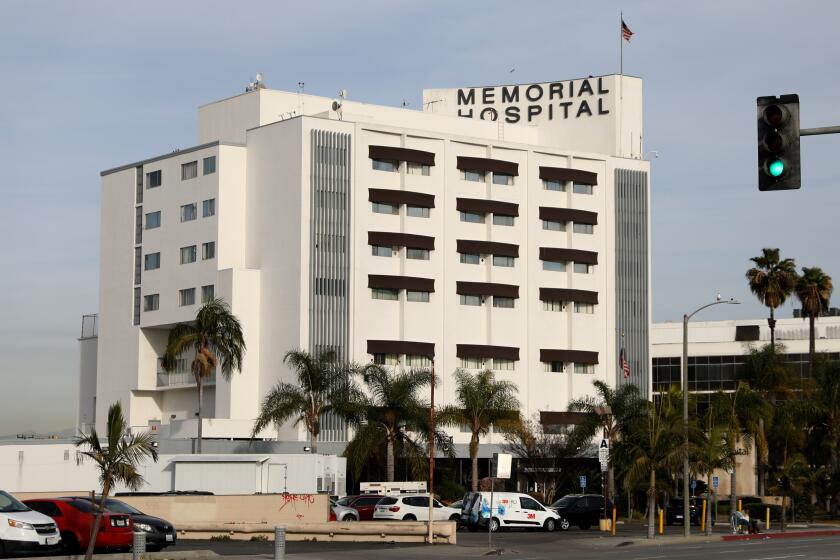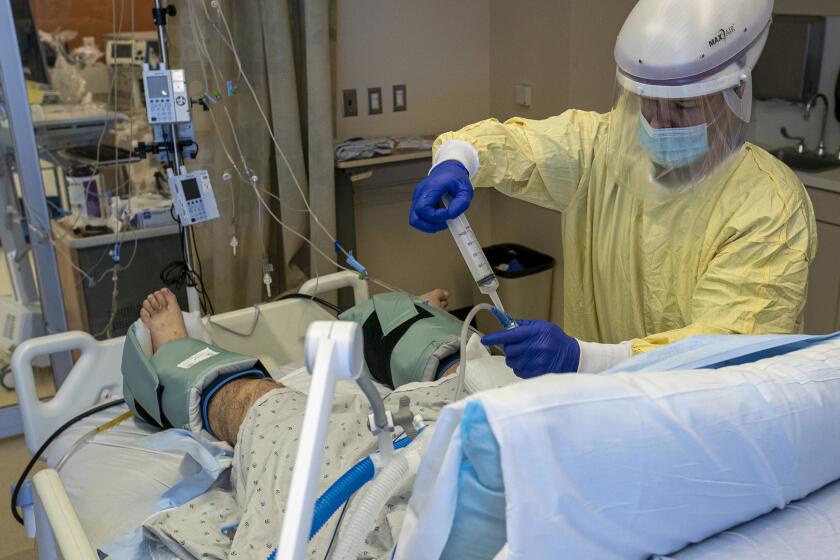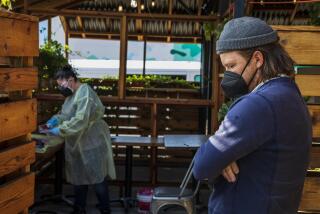Newsom cancels California’s COVID-19 stay-at-home orders

California officials lifted regional coronavirus stay-at-home orders across the state on Monday, a change that could allow restaurants and businesses in many counties to reopen outdoor dining and other services.
- Share via
California officials lifted regional coronavirus stay-at-home orders across the state on Monday, a change that could allow restaurants and businesses in many counties to reopen outdoor dining and other services.
All counties will return to the colored tier system that assigns local risk levels based on case numbers and rates of positive test results for coronavirus infections.
For the record:
11:04 a.m. Jan. 26, 2021A previous version of this article reported that services in the Sacramento region were allowed to reopen on Dec. 13. They were allowed to reopen on Jan. 12.
Most areas will be classified under the “widespread” risk tier, which permits hair salons to offer limited services indoors but restricts many other nonessential indoor business operations.
“Today, we can lay claim to starting to see some real light at the end of the tunnel as it relates to case numbers,” Newsom said at a Monday news conference. “Each region’s a little bit different, but we are in a position projecting four weeks forward with a significant decline in the case rates, positivity rates. We are anticipating ... still more decline in hospitalizations and more declines in ICU, and that’s why we’re lifting that stay at home effective immediately today.”
After a winter surge, coronavirus cases and hospitalizations are beginning to decline across the state. But compared to when the governor established the stay-at-home order framework last month, total confirmed cases have more than doubled, daily confirmed cases have increased, the seven- and 14-day positivity rates are higher and ICU capacity is lower in each region of the state except Northern California, according to the most recent state data available.
The change could lessen restrictions in the Southern California, Bay Area and San Joaquin Valley regions, which were still under stay-at-home orders before the announcement, unless local officials adopt stronger restrictions. Throughout the pandemic, local leaders have been allowed to go beyond the state’s rules, approve their own stay-at-home orders or shut down additional activities they deem too risky for their areas.
“Seven weeks ago, our hospitals and front-line medical workers were stretched to their limits, but Californians heard the urgent message to stay home when possible and our surge after the December holidays did not overwhelm the healthcare system to the degree we had feared,” said California Health and Human Services Secretary Dr. Mark Ghaly.
Los Angeles County, which has become a national hotbed of the coronavirus with hospitals overwhelmed by patients, “will essentially align with the state, by the end of the week, to allow for the reopening of permitted activities under the Purple Tier,” said County Supervisor Hilda Solis. The move — which comes after more than 5,000 people have died of COVID-19 in L.A. County in less than a month and as Southern California continues to report zero hospital capacity — will allow for the reopening of personal care services and outdoor dining at restaurants.
The outdoor dining ban had been highly controversial, with some elected officials and the restaurant industry fighting in and out of court to overturn it. Those affected said the restrictions had devastated restaurant owners and their employees, who were already struggling amid the pandemic. Outdoor dining offered a lifeline for some, and restaurants invested thousands of dollars to be able to offer it.
Last week, a group of more than 50 wineries and restaurants across Napa and Sonoma counties sued to overturn a state ban on in-person dining, with owners saying their constitutional rights were being trampled as they slipped into financial ruin.
Meanwhile, officials in some other Southern California counties have been even more critical of the state-imposed rules, and had urged Newsom to give them more local control.
Newsom’s announcement marks another significant shift in the governor’s reopening plan, a constantly changing process that has sparked questions and few answers about the data and reasoning behind his decisions.
Though business owners were relieved by the possibility of reopening some outdoor services again, others were concerned that Newsom’s directive was premature. Some state legislators and local officials said the Newsom administration gave them very little notice about his plan to call off the stay-at-home orders — a situation that could have hampered the ability of locals to quickly establish their own restrictions before the state’s safeguards were removed.
Los Angeles Mayor Eric Garcetti said Monday morning that his administration learned of the governor’s move “as quickly and as suddenly as the public,” and that he was “anxious to be briefed with more details from the state.”
Garcetti said COVID-19 infections seem to be slowing in the L.A. region, but remain extremely high.
“Still very high historically,” he said. “Still numbers that are six to seven times more hospitalizations than what we had just a month and a half ago, but the right trend.”
The governor announced the five regions of the stay-at-home order framework on Dec. 3 in an effort to reduce the strain on hospitals as case numbers surged. Although state data show hospital systems in Southern California and the San Joaquin Valley remain strained, the Newsom administration said models project ICU capacity in those regions and the Bay Area will exceed 15% — a threshold for lifting the regional shutdowns — over the next four weeks.
In just 24 days, 5,106 people have died in Los Angeles County from COVID-19, while about 10,000 died in the previous nine months.
Earlier this month, Newsom lifted stay-at-home orders for the Greater Sacramento region.
State officials have not released a full accounting of how four-week ICU calculations were being made. And although services were allowed to reopen in the Sacramento region on Jan. 12, daily reports of available intensive care unit beds never approached the 15% threshold. The state said its models showed the region would see ICU capacity increase to that level by early February and allowed the area to move into the widespread tier. ICU capacity in the Northern California region, which is not under the stay-at-home order, has continued to remain above the state’s shutdown benchmarks.
Before the change, the Bay Area had remained under the stay-at-home order due to a four-week projection of a decrease in hospital bed availability. The San Joaquin Valley region reported very little ICU capacity.
San Francisco Mayor London Breed tweeted Monday that San Francisco would resume outdoor dining at restaurants and allow personal services to reopen now that Newsom has lifted regional stay-at-home orders. The mayor and Public Health director Dr. Grant Colfax were scheduled to address the changes at an early afternoon news conference.
Vaccines, aggressive strains and fatigue: California hits 3 million COVID cases and a crossroads.
California is continuing to see a record-breaking number of deaths from COVID-19.
Despite positive developments, officials are expressing growing concerns about new and potentially more contagious variants of the coronavirus that have been detected in California and beyond.
One of the new variants is believed to be 50% more transmissible than the conventional variety of the coronavirus. If that variant became widespread, it would likely lead to more infections, hospitalizations and deaths.
The situation in Los Angeles County remains critical despite improvements in the number of cases. Hospitals are seeing reductions in the number of COVID-19 patients, but many facilities are still overcrowded.
Just two weeks ago, officials talked about expanding the stay-at-home order by closing malls and outdoor gyms. But no action was taken.
Times staff writers John Myers, Paloma Esquivel, Kevin Rector and Maura Dolan contributed to this report.
More to Read
Sign up for Essential California
The most important California stories and recommendations in your inbox every morning.
You may occasionally receive promotional content from the Los Angeles Times.













